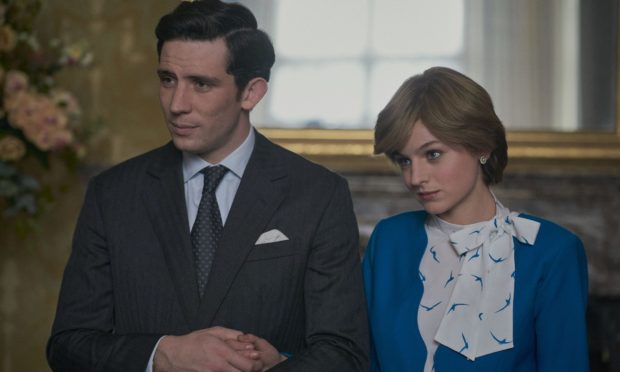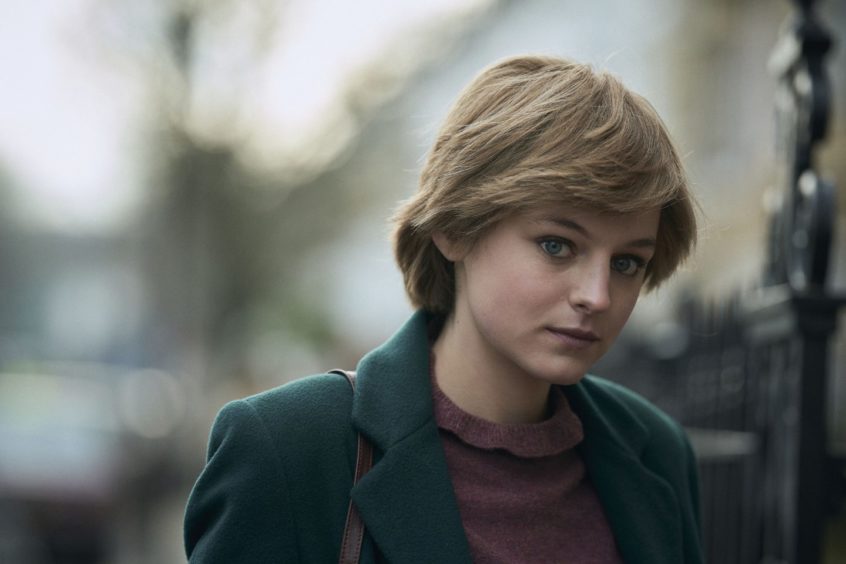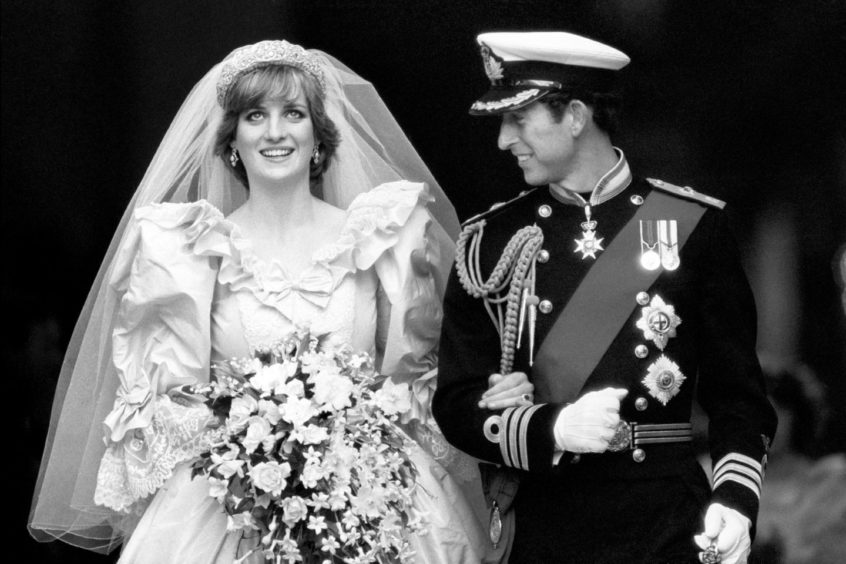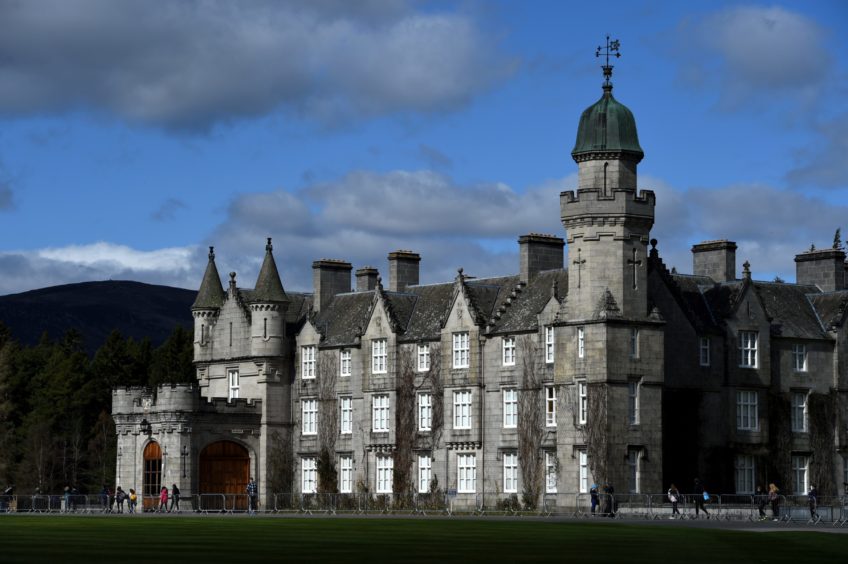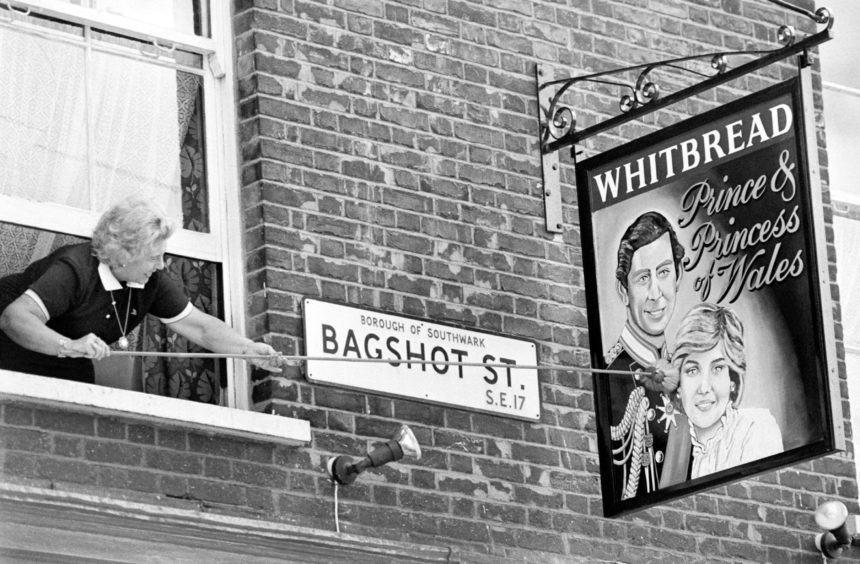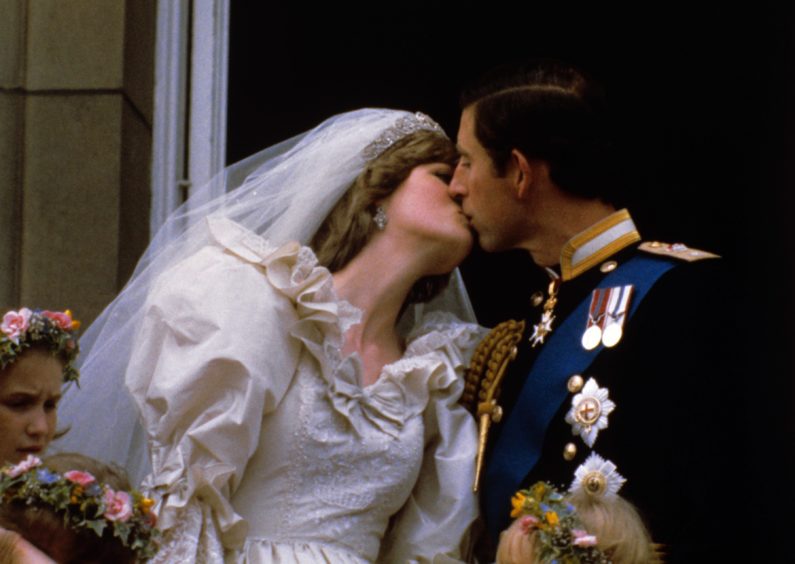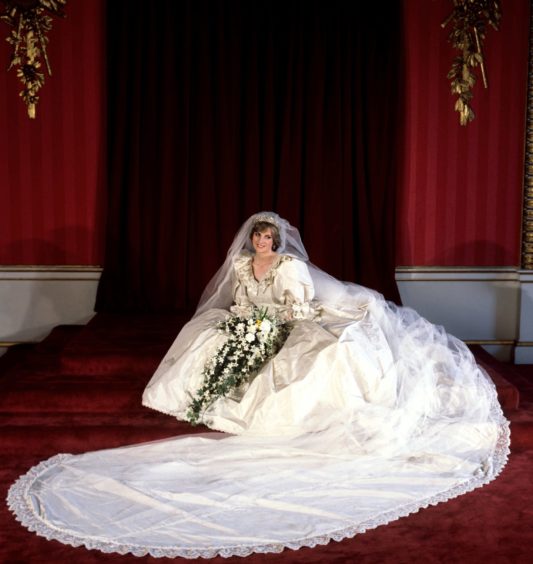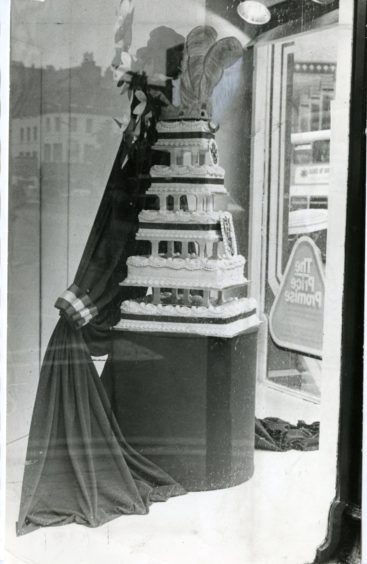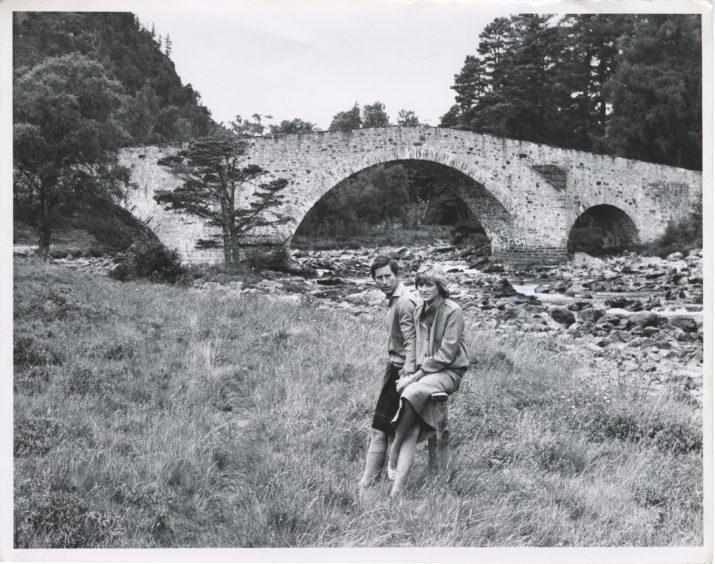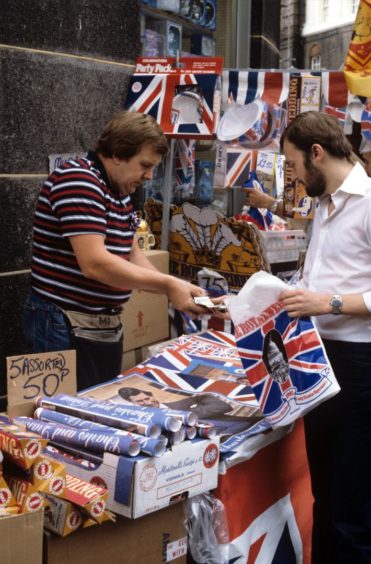As Netflix blockbuster The Crown comes under scrutiny for its “inaccurate” depictions of Charles and Diana in series four, Gayle Ritchie looks at how the north-east embraced the royal couple in 1981.
Scandal, political turmoil and fractured relationships – The Crown has it all.
The latest season of the Netflix drama, which chronicles the Diana years, has got everybody talking, including the royals themselves.
The fourth series, which was made available on Sunday, follows Prince Charles and Lady Diana’s relationship as well as Margaret Thatcher’s time in Number 10.
The Crown has garnered plaudits for its acting and been slated for its supposed inaccuracy by palace insiders, with some accusing scriptwriter Peter Morgan of abusing artistic licence.
Members of the royal family were said to be “particularly uncomfortable” with the latest series, with graphic scenes of Charles’s marriage break-up with Diana as well as her struggles with bulimia.
Former Buckingham Palace press secretary Dickie Arbiter said the royals were “pretty used to being portrayed” for entertainment purposes, but expressed concern that some viewers may not realise that The Crown is not an accurate portrayal of events.
He criticised the series for “stretching dramatic licence to the extreme” and added: “It’s a hatchet job on Prince Charles and a bit of a hatchet job on Diana.”
Courier writer Jennifer McLaren is a big fan of The Crown.
“Season four is where Charles and Diana will meet, become engaged and marry,” she said.
“Already I can see it is going to be unflattering and there will be a lot of focus on how the royal family apparently attempts to engineer relationships – and how this ultimately backfires.
“There will be drama for entertainment’s sake and I am sure it will cause division with fans of Diana versus fans of Queen Elizabeth.”
Ultimately Jennifer regards The Crown as a piece of “well-researched fiction”.
“I see it as a reflection of things that have happened in the past,” she said.
“If people want to learn more about what really happened they can do their own research.
“It’s not there to educate, it’s there to entertain and perhaps cast a bit of scrutiny on the relationship the UK has with its modern monarchy.”
Scottish links
The 10-episode series picks up the story of Queen Elizabeth II and the royal family in 1979 just as Margaret Thatcher is elected as prime minister and Prince Charles meets his future wife, Diana Spencer.
After her election victory, Thatcher and her family are invited to Balmoral in episode two to spend an awkward weekend with their royal hosts.
However, it’s not Balmoral itself that stars in the film – Ardverikie Castle near Loch Laggan in Inverness-shire is used as the exterior location for Balmoral while for the interior, a number of stately homes and historical manor houses were used including Hedsor House in Buckinghamshire and Knebworth House in Hertfordshire.
Princess Diana’s maternal grandmother, Lady Fermoy – depicted as a very stern old woman – also features in the fourth series.
She was born Ruth Sylvia Gill at Dalhebity, Bieldside, Aberdeenshire, the daughter of Colonel William Smith Gill and his wife, Ruth.
Charles and Di mania
Ahead of the royal couple tying the knot at St Paul’s Cathedral in London, there was Charles and Di fever across the globe, and Scotland threw itself right into the thick of it.
The royal wedding was broadcast in 74 countries and watched by 750 million people around the world. Americans set their alarm clocks early to tune in live and in the UK, the wedding date – July 29 1981 was declared a national holiday.
Cities, towns and villages threw street parties, schools closed to allow kids a day off school to celebrate the momentous occasion, work places closed down – the world went wild.
Following the ceremony, the couple and 120 guests went to Buckingham Palace for a wedding breakfast.
Diana and Charles made a traditional appearance on a balcony and delighted the crowd when they kissed.
The couple was driven over Westminster Bridge to catch the train from Waterloo station to Romsey in Hampshire to begin their honeymoon.
They travelled to Broadlands, where Prince Charles’s parents had spent their wedding night in 1947. They stayed there for three days, then flew to Gibraltar, where they boarded the Royal Yacht Britannia for an eleven-day cruise of the Mediterranean.
They then flew to Scotland, where the rest of the royal family had gathered at Balmoral Castle, and spent time in a hunting lodge on the estate.
Here we look back at a selection of images showing how Scotland marked the royal wedding on July 29 1981.
Flags were waved and cakes were devoured at a street part in Aboyne in Aberdeenshire.
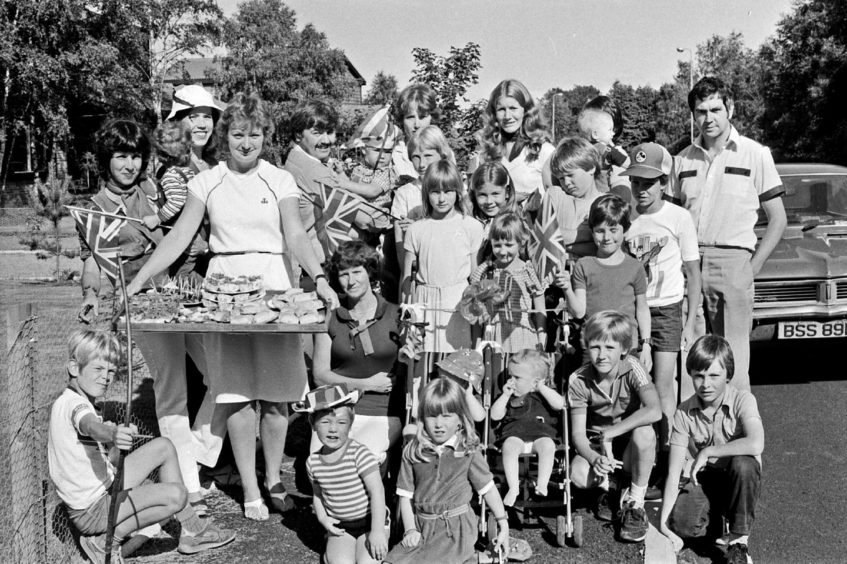
Logie Avenue in Aberdeen held a fun garden street party. These wee girls were keen to show their support for Charles and Di.
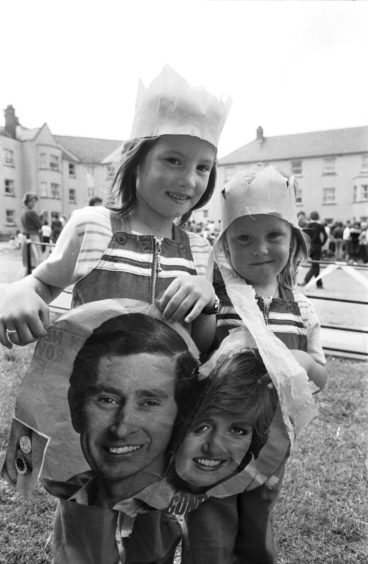
A three-tier cake in the window of Broughty Ferry confectioners Goodfellow & Steven caused a great deal of comment. It was decorated with fleur-de-lis and had a shield bearing the initials CD, for Prince Charles and Lady Diana. But anyone who imagined sinking their teeth into the lovely, dark fruity cake, need not have bothered – it was made of cardboard! The picture shows Eleanor Kerr with the cake.
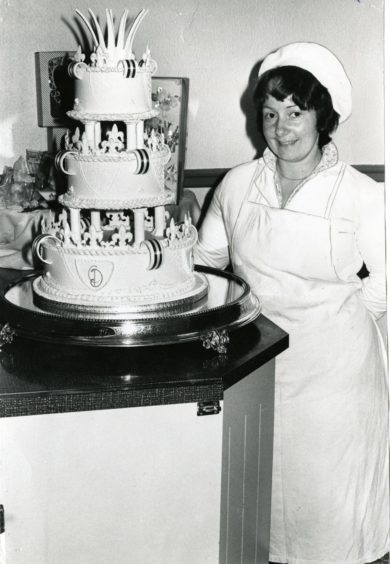
A street party was held in Dundee’s Whitfield.
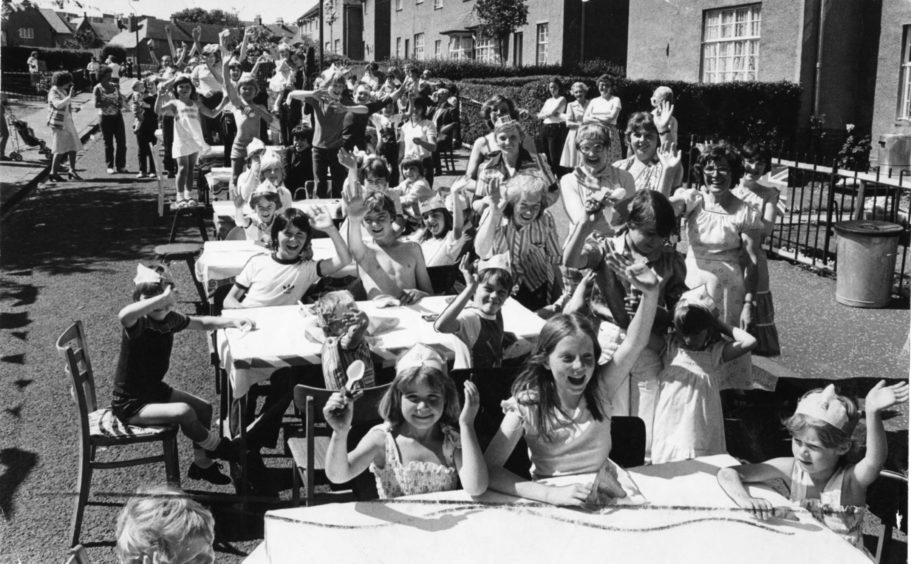
Loads of people attended a royal wedding street party held in Dundee’s Dudhope Arts Centre. It was organised by the Polepark and Cleghorn Community Association.
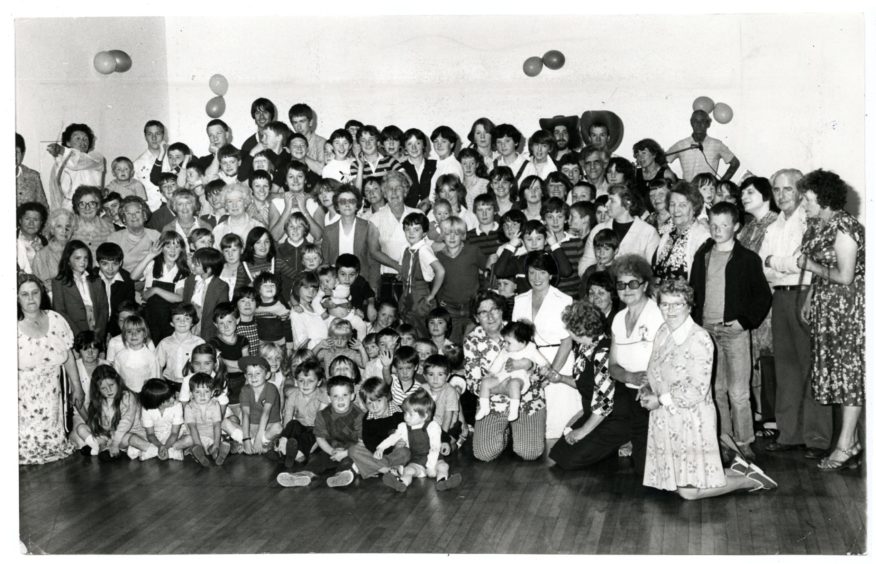
There were smiles all round at Aberdeen’s Logie Gardens street party.
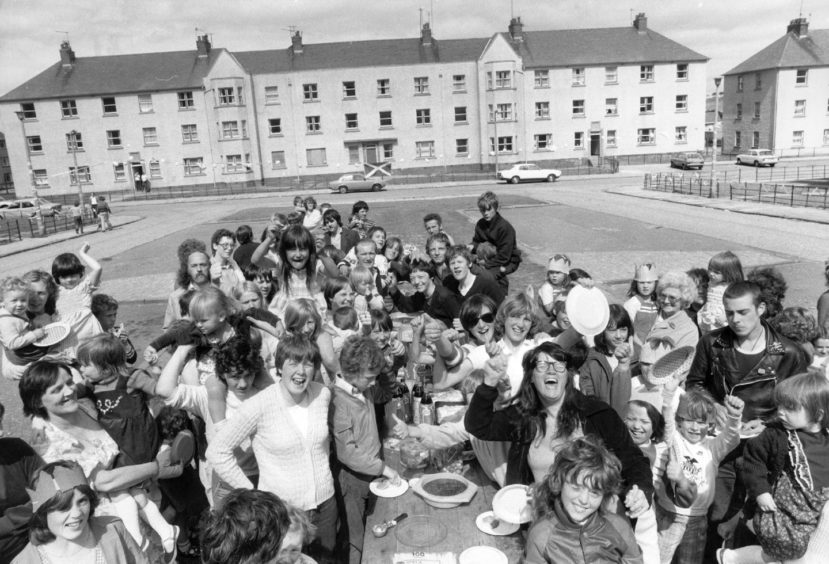
Residents of Slater Crescent, Mair Street and Wood Place in Portknockie near Buckie turned out for a Charles and Di themed street party.
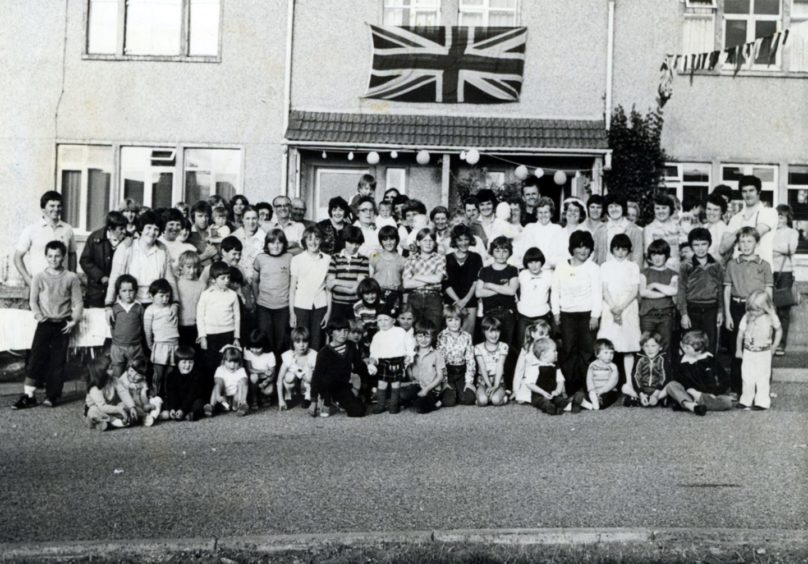
Residents of Gordon Road in Mannofield, Aberdeen, turned out in force to celebrate the royal wedding.
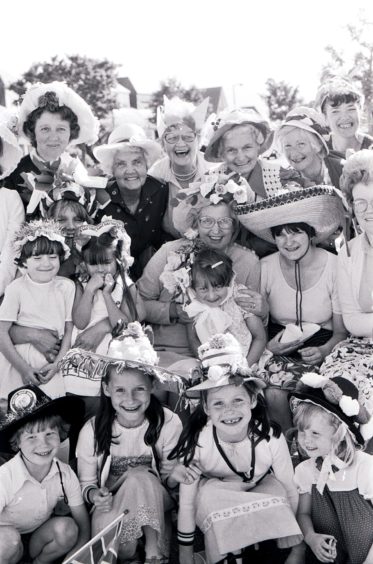
Uist Road in Aberdeen held a fun royal-themed gala event.
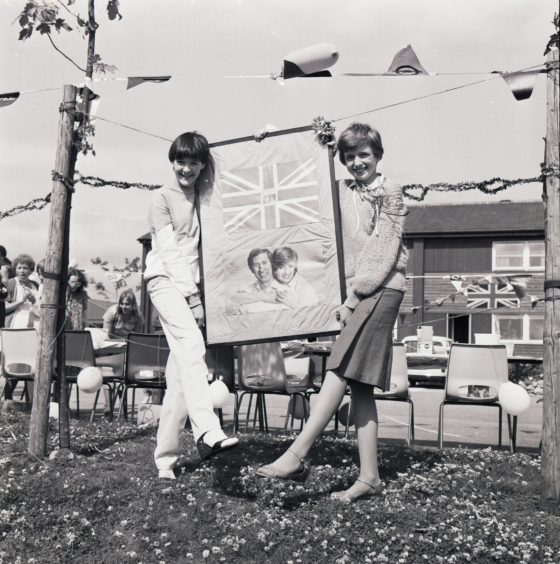
A fun street party in Howes Crescent in Aberdeen.
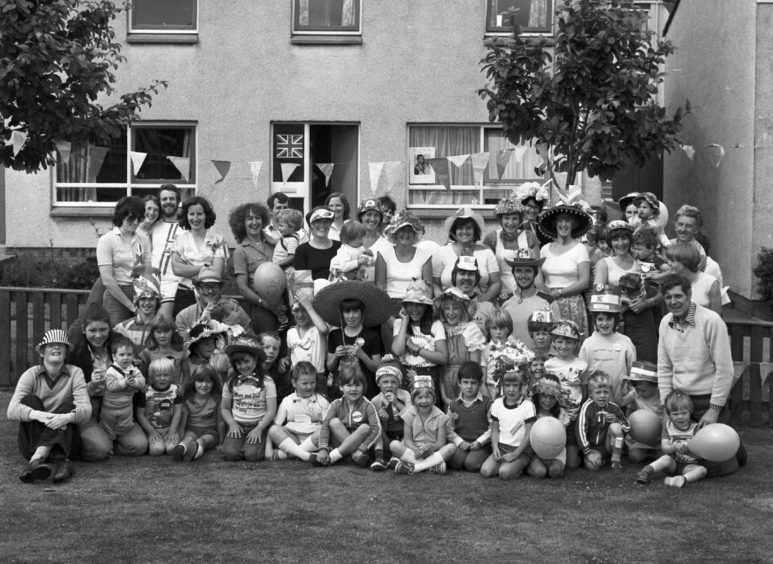
A lady in Aberdeen watching the royal wedding on telly while getting her hair styled in the same way as Diana!
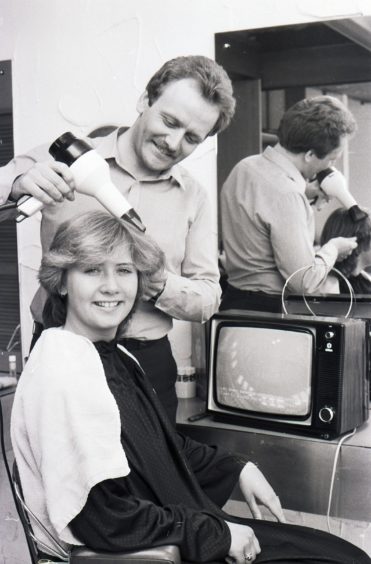
A scene from one of the Dundee street parties in 1981.
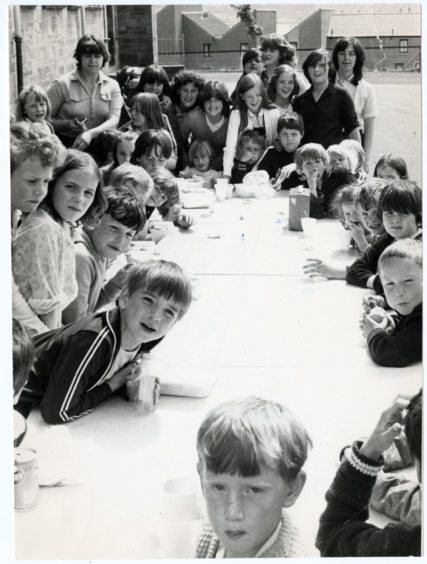
A royal wedding street party in Beechwood, Dundee.
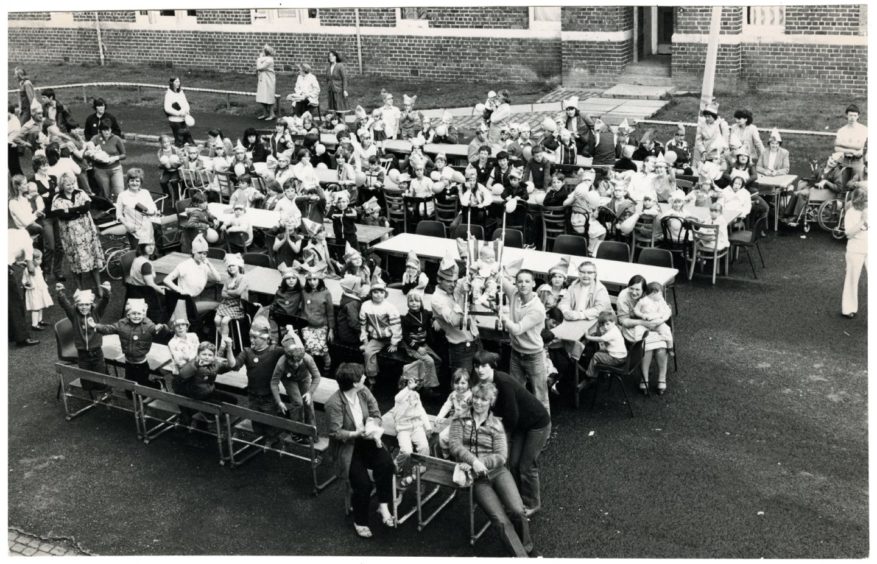
A young girl and her dog at a street party in Aboyne, Aberdeenshire.
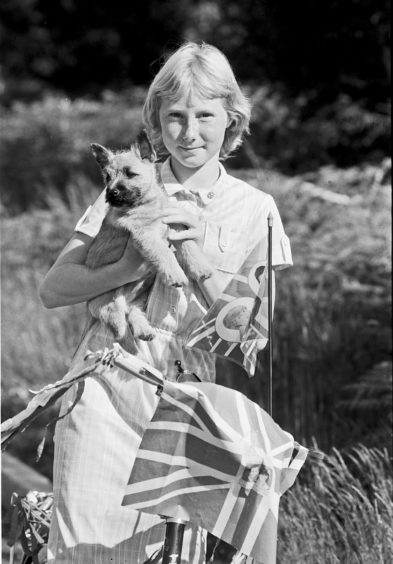
Jolly japes at Aberdeen’s Airyhall Avenue royal wedding street party.
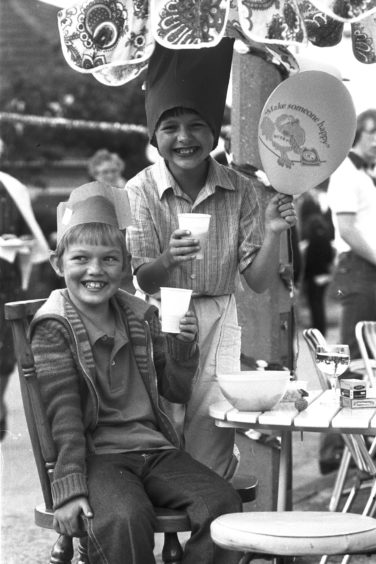
A five-tier royal wedding cake featured in a window display of Debenhams, Dundee. It was made by master baker Alan Clark and was to be presented to the children of Strathmartine Hospital the Saturday after the wedding. The store ran a “guess the weight” competition with all proceeds going to disabled charities in Dundee.
Royal wedding celebrations at Fullarton Court in Aberdeen.
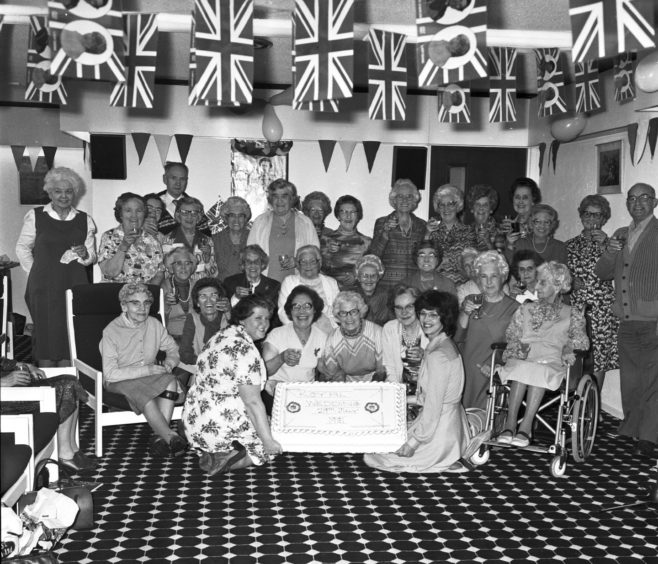
Happy Aberdonians celebrating the wedding of Prince Charles and Princess Diana.
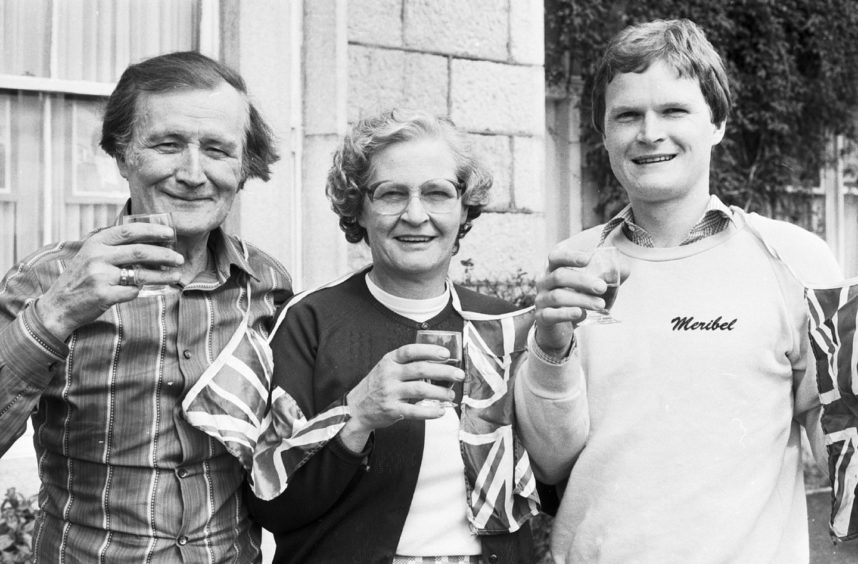
Royal wedding celebrations indoors – in Croft House, Aberdeen.
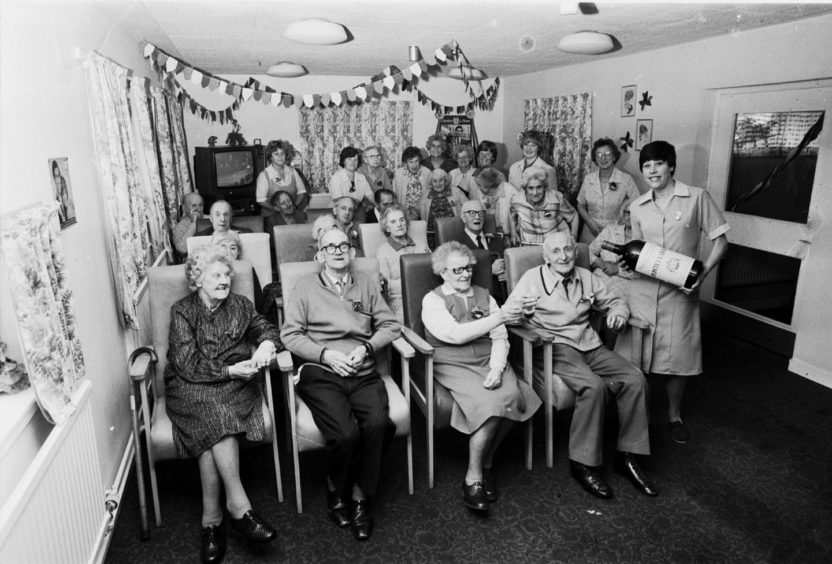
A young girl gets into the spirit of all things royal at a street party in Aboyne, Aberdeenshire.
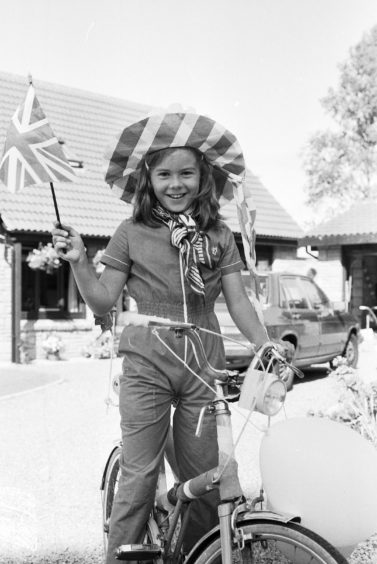
Fun for all ages at Aberdeen’s Bedford Avenue royal wedding street party.
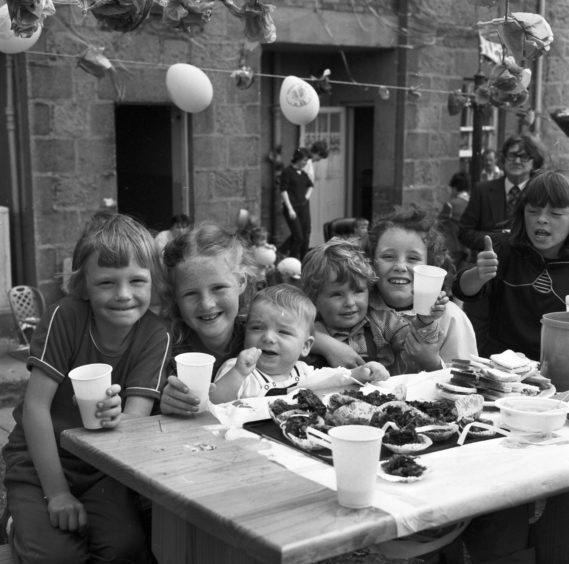
The Dundee gifts
Dundee in 1981 was a city going through hard times, with many people unemployed.
On July 23, just six days before the royal wedding, The Courier revealed that the city’s 190,000 population had raised just £76 for a wedding gift.
This prompted customers and staff at Dundee pub The Oasis to have a whip-round – to save the city’s face. The collection raised £100.
The district council’s Labour administration was attacked for its refusal to give a civic gift and its offhand attitude to the public subscription fund.
A few weeks before the wedding, the region sent garden furniture made in Dundee to the royal couple.
A street vox pop revealed mixed feelings about the wedding, with one person interviewed stating: “Personally I think £76 is about all they’re worth… it’s as good as they can expect for a city going through hard times.”
Others thought if a decent sum of money had been raised, it would have been a good “shout” for Dundee.
A few days later, the council agreed to approach local artist McIntosh Patrick about gifting the royal couple one of his paintings.
Royal souvenirs
Many shops paid tribute to the royal couple with commemorative displays but Gledhills in Dundee’s Keiller Centre transformed one of their units into a royal wedding souvenir shop.
It was given over entirely to royal memorabilia – china mugs and glassware featuring Charles and Di were particularly in demand.
Chin chin!
Hotels and bars across the north-east toasted the royal couple with champagne – and some venues were generous enough to supply it free.
The Huntly Hotel in Aberdeenshire opened at 10am and served customers free champagne cocktails and hors d’ouevres.
The Royal British Legion’s Forres branch sold pints and nips for 5p.
Scottish kindness
Kincardine and Deeside District gifted a teak garden seat with an inscribed plaque to the royal couple.
The Caithness smoked salmon for the royal wedding breakfast was provided by Archie Sinclair of Upper Smerrel, Latheronwheel.
A few days before the ceremony, a security van made a secret dash from Caithness to London with the precious cargo of fish!
